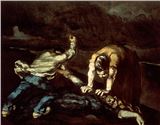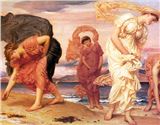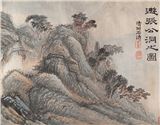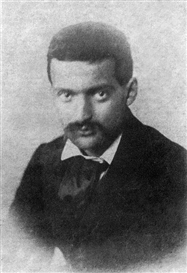Cézanne: The Inadvertent Father of Modern Art
The enduring legacy of a visionary and pioneering artist in his relentless pursuit of capturing the essence of nature
Benjamin Blake Evemy / MutualArt
Apr 03, 2024
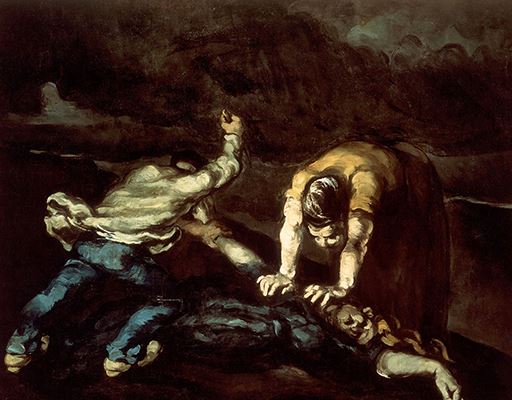
Although he would one day be hailed as the “Father of Modern Art”, Paul Cézanne was never aiming to be a revolutionary in his field. He wanted to follow in the footsteps of those he admired and to draw inspiration from nature, but by creating in his own particular fashion – without regard for what was popular amongst the masses – Cézanne would inadvertently change the art world forever.
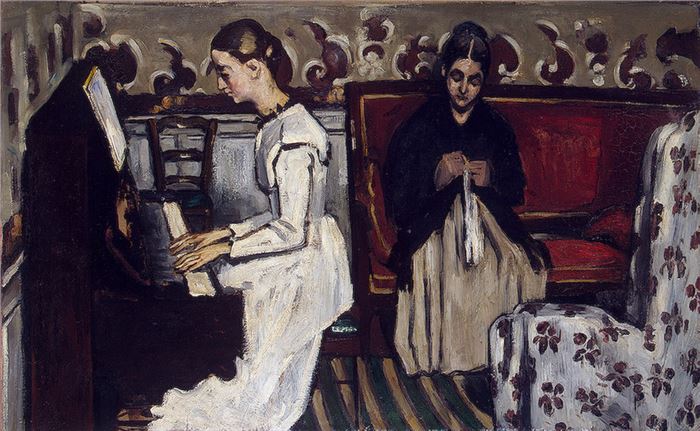 Paul Cézanne, The Overture to Tannhauser: The Artist's Mother and Sister, 1868, oil on canvas, Hermitage Museum, St. Petersburg
Paul Cézanne, The Overture to Tannhauser: The Artist's Mother and Sister, 1868, oil on canvas, Hermitage Museum, St. Petersburg
Paul Cézanne was born in Aix-en-Provence, France, on January 19, 1839. It should come as no surprise that the young Cézanne showed a talent for drawing while attending school, but what is of particular interest is the fact that his best friend was none other than Émile Zola, who was also destined for creative greatness, albeit with the pen as opposed to the brush. Cézanne, like many others who decide to pursue art in their youth, had to first persuade his father in giving his permission. A feat that is even more considerable when the patriarch in question is of the corporate world. Cézanne’s father was a banker, and had expectations that his son would follow in his footsteps. Thankfully, Zola was already living in Paris, and fervently encouraged Cézanne to join him there. Eventually, the artist’s father conceded, and in 1861, he began to study at the Académie Suisse.
Unfortunately, Cézanne’s dream of seriously studying in the nation’s capital proved not what he had expected, as he was rejected by the Ecole des Beaux Arts. Understandably dejected, he returned to Aix, and resigned himself to work at his father’s bank. But by late 1862, Cézanne had grown exceedingly tired of it, and returned to Paris, rejoining the Académie Suisse. This time he would continue on the path he initially had set out on, pursuing his art with unwavering resolution.
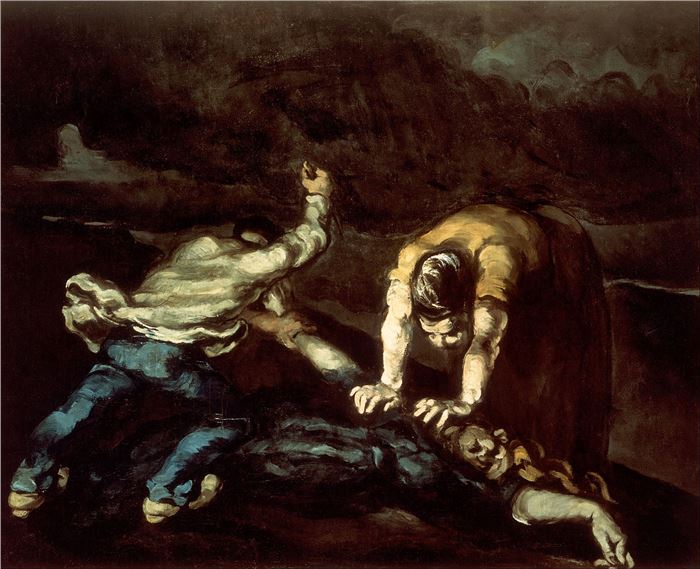
Paul Cézanne, The Murder, 1867, oil on canvas, Walker Art Gallery, Liverpool
Although many of Cézanne’s pieces exude a gentle tranquility, The Murder, 1867, showcases the artist’s flair for the dramatic. With arms outstretched like Christ upon the cross, the victim is pinned down by her assailants, face contorted, as a blade is thrust violently down towards her torso. The movement Cézanne has captured in the left-hand killer – especially in the billowing folds of his shirt, is exceptional, and the darkened clouds that roil overhead, almost seeming to physically press against the back of the right-hand killer, create an immense feeling of claustrophobia. The Murder comes from what has been dubbed Cézanne’s “dark period”, which lasted from 1861 until 1870.
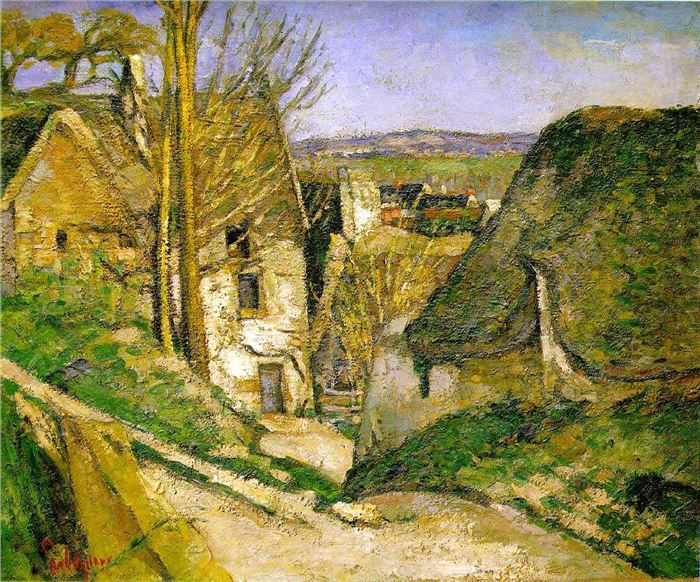 Paul Cézanne, The House of the Hanged Man, 1873-4, oil on canvas, Musée d’Orsay, Paris
Paul Cézanne, The House of the Hanged Man, 1873-4, oil on canvas, Musée d’Orsay, Paris
Alongside two other pieces by Cézanne, The House of the Hanged Man was exhibited at the first of the eight Impressionist exhibitions held in Paris from 1874 to 1886. Cézanne had met Camille Pissarro around the beginning of the 1860s, and the older painter would have a considerable influence upon him. Pissarro urged Cézanne to stop painting primarily in earth-based colors such as browns, and instead to execute his pieces with a palette that consisted of primary colors and their complementaries. Although Pissarro’s influence can be seen in The House of the Hanged Man, around this period Cézanne had also begun to study nature more closely, and discovered that he was much more interested in defining the structure of things than the effects of color. The piece also serves as an apt example of the passion that Cézanne painted with, as well as his unwavering dedication to achieve exactly what it was that he wanted to express. As can be seen most clearly on the roofing of the cottage found on the piece’s lower right-hand side, instead of using purely singular strokes, Cézanne layered the piece heavily with paint. This is as if he felt that he could not aptly express what he was wanting to, without applying more and more paint.
Even though he was well-respected by his contemporaries, it wasn’t until Cézanne was around fifty years of age, that he actually started to see more frequent exhibitions. His first solo exhibit was held in 1895, at the Vollard Gallery, whose owner was close to the artist. Still, his work was not truly accepted – to most critics, and to the general public, he was a talentless lunatic.
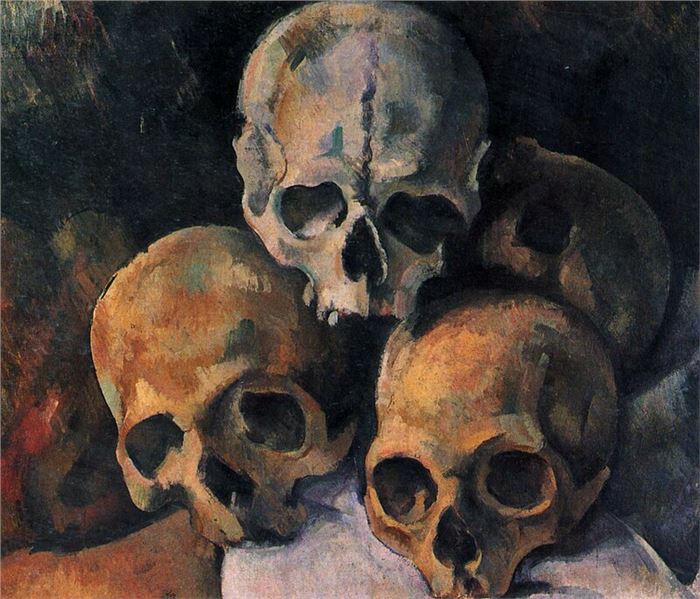 Paul Cézanne, Pyramid of Skulls, c.1900, oil on canvas, private collection
Paul Cézanne, Pyramid of Skulls, c.1900, oil on canvas, private collection
During the last decade of his life, Cézanne grew considerably morose, reflecting on mortality and his life’s work. Despite the fact that he had painted with feeling, he had expressed what he needed to in his brushstrokes, and he was never trying to revolutionize the medium, he still had not achieved the appreciation that he deserved, and he was growing tired and old. Pyramid of Skulls was painted around six years before his death. Cézanne was no stranger to the subject matter – having painted still lives of skulls in the early days of his career – but considering he had written in his letters during this latter epoch, such things as: “For me, life has begun to be deathly monotonous” and “I might as well be dead,” it is safe to say that the piece aptly reflects what the artist was indeed feeling.
Cézanne finally succumbed to the death he seemed to crave, on October 22, 1906. Like is so common with artists of unique vision, it wasn’t until after his life ended that he began to garner the admiration that he should have received. This is often due to the fact that a truly visionary artist is generally ahead of their time, as was the case with Cézanne. The year after his death, saw two exhibitions: one held at the Bernheim-Jeune gallery and the other being the 5th Salon d’Automne, that helped start to establish Cézanne as the boundlessly talented painter that he is so rightfully seen as today.
For more on auctions, exhibitions, and current trends, visit our Magazine Page


